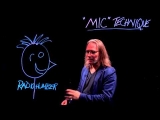Non destructive editing
Non destructive editing
When sound recorded on tape or film is edited, portions are removed and either discarded or placed on outtakes reels or in trim if an edit needed to be changed, the original material may have been difficult or impossible to retrieve. This type of editing is known as “destructive”, since the original material is actually being , with non-linear audio and video workstations, most editing is “non-destructive”, since the original material is not actually being altered. The edits happen on a virtual timeline, known as an EDL or edit decision list. They are simply markers that tell the computer what parts to play at what time, so as the editors cut, copy, paste, and delete, the original material remains unaltered. This makes making changes much easier, since the original material is all still available. However, be aware that even with workstations, there can be some operations that are destructive. Many workstations will permit new recordings to overwrite existing recordings, much like tape. Also, whenever editing is done on a sample level, for example, redrawing the waveform to eliminate pops and other noises, this operation is destructive as well, since the redrawing permanently changes the original sound file.















